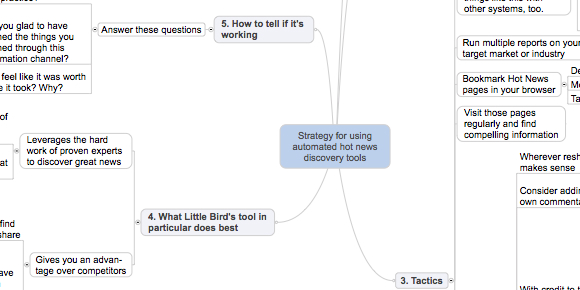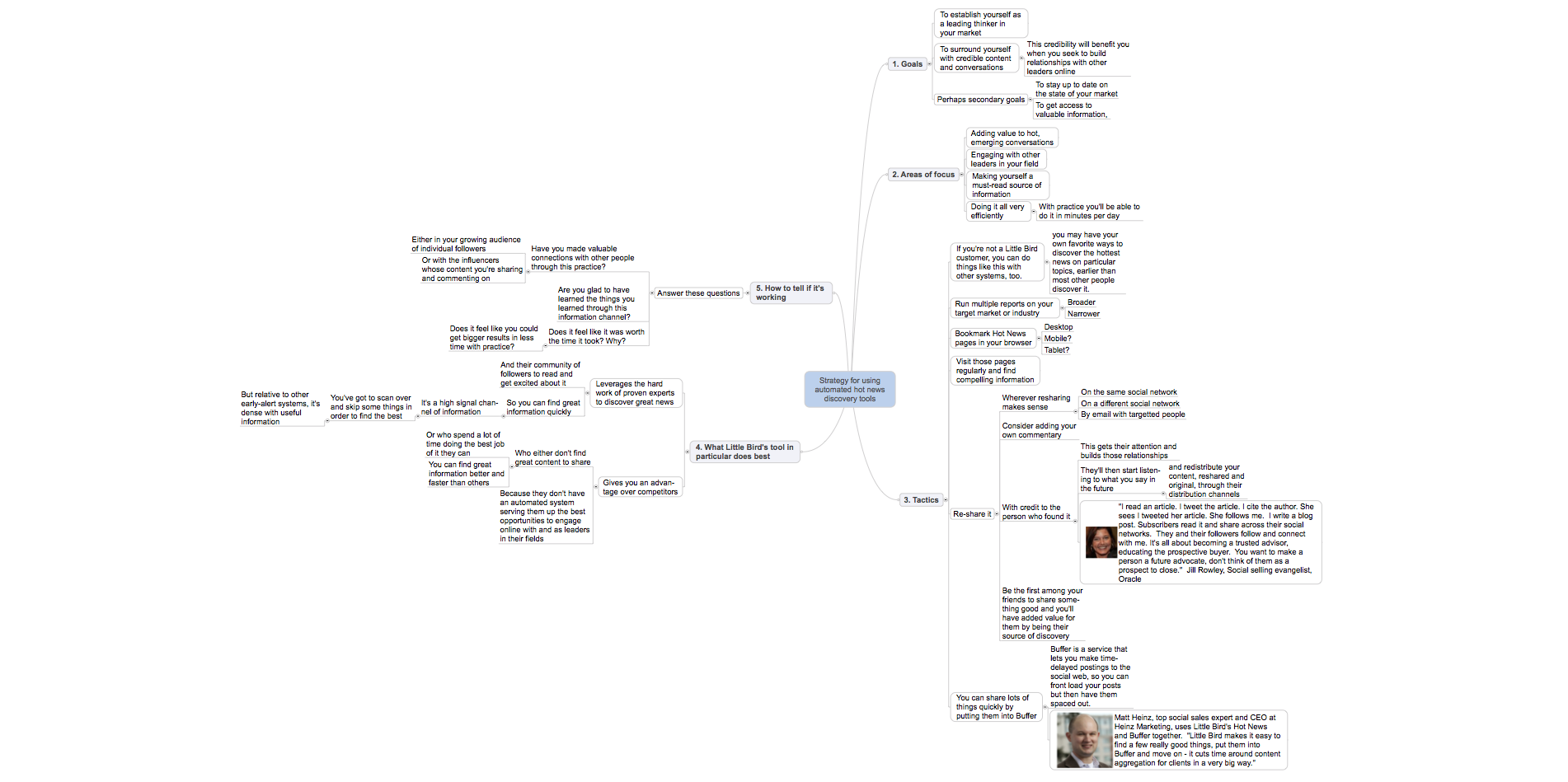 |
|
| Name: Marshall Kirkpatrick | |
| Title: CEO and Co-Founder, Little Bird | |
| Started using Mindjet: 2013 | |
| Social links: Twitter |
|
How did you hear about Mindjet?
I used to think that mind mapping was for dorks. Then I discovered some of the leading voices online that talk about mind mapping: people like Chuck Frey, Dan Roam, Paul Foreman, Roy Grubb, Chance Brown and Jamie Nast. I saw the work they were doing and realized just how powerful this type of visual communication could be.
I knew Mindjet’s Jascha Kaykas-Wolff and followed him online and thus learned about Mindjet as the best way to sync maps from my Mac to my iPhone to my iPad.
What do you primarily use it for?
My uses for the software are many and diverse. My daily to-do list is in a mind map format. Every strategic decision I make goes through a mind map of P&G CEO AG Lafley’s 5 questions every good strategy should answer. I keep a big mind map of all the interesting lessons I learn in work, reading and life – which I then check mark when I have added them to my iPhone flashcard app. I’ve got plans for life and work mind mapped, I make mind maps about anything that has nested matters to consider.
I believe that hierarchical, non-linear thinking can be of great benefit to many endeavors and I believe that mind maps are great for facilitating that kind of thinking.
What is your favorite feature and why?
My favorite thing about Mindjet is the kinesthetic feel of the iPad app. I wish the platform was better about syncing map versions across devices, but I may just need to figure it out better. I didn’t know how viscerally satisfying using the service would be. You know those bumper stickers that say things like “I’d rather be fishing,” or “I’d rather be shopping at Nordstroms?” I would love a t-shirt that says “I’d rather be mind mapping.” Most of the time, I would.
How does mind mapping help with the collaborative process?
If there’s one bit of advice I’d offer new converts seeking to collaborate with co-workers using mind maps, it’s the wisdom of Toni Krasnic. Toni once said that looking at someone else’s mind map is like looking at someone else’s vacation photos – it’s just not the same if you weren’t there. So I try to either create mind maps with my co-workers from the start, or if I can’t do that – then I spare them the struggle and turn my thoughts into a linear format before sharing.
Tell us about your map.
This mind map describes a strategy for leveraging topical news readers to build your business network online. Whether that’s the expert-driven Hot News tool that Little Bird offers or some other system, the same strategy should be useful in quickly and efficiently using engagement with content to build new connections on the social web.
The strategy is modeled after P&G CEO A.G. Lafley’s 5 questions every good strategy should answer. Those questions are: what does winning look like? (goals) Where do we play to win? (focus) How do we win where we play? (tactics) What core competencies can we leverage to win? What measurement and management tools can we use to track our progress towards our goals? You can use that set of questions to strategize effectively about anything – not just how to engage with content in social media! It works very well for me in a mind map.
[Click for full sized image]
—————————————————————————————–
Marshall Kirkpatrick is a former journalist turned entrepreneur. He is now the CEO of Little Bird, a B2B technology for finding and engaging with the world’s leading experts and influencers in any field, across the social web.
Here at Mindjet, we know the value of sharing ideas. It’s just like philosopher Michel de Montaigne said way back in the 1500s: “It is good to rub and polish our brain against that of others.” The Mindjet User Spotlight series aims to help that little endeavor along by bringing your stories and experiences with Mindjet to the forefront. If you’ve got one to share, don’t be shy! Give us a shout.


